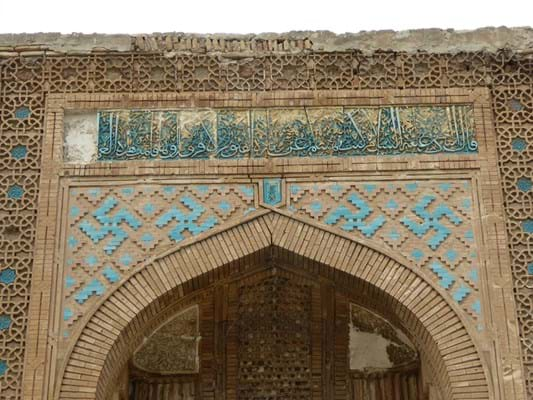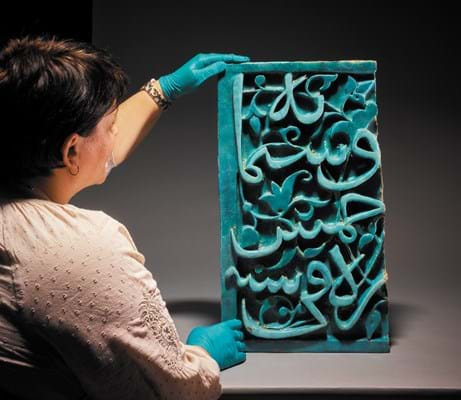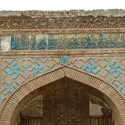The 13th century tile was taken from the Chashma-Ayub Mausoleum, in Vobkent in the Bukhara region of Uzbekistan in 2014. It was illegally exported and entered the art market.
St James’s Islamic and Indian art dealer Simon Ray then bought the tile, unaware that it had been stolen. He offered it for sale last year but was contacted by Prof James Allan, former keeper of Eastern art at the Ashmolean Museum, who had recently visited the monument and knew it had been stolen. He spotted it in Ray’s catalogue and alerted the dealer.
“Good faith purchase”
Ray then contacted the British Museum in order to arrange for its repatriation. He said: “I bought the tile in good faith in the belief that it had a good German provenance. After Prof Allan’s discovery I felt it imperative that I should immediately return the tile to the monument from which it was removed. I am very happy that the tile will now return to its original home and I am grateful to Prof Allan for his identification of the tile and to the British Museum for their efforts in liaising with the Uzbekistan authorities for its repatriation.”
The museum held discussions with the Embassy of the Republic of Uzbekistan in London and the British Embassy in Tashkent. It will now be transferred back to the Vobkent mausoleum.
Dr Hartwig Fischer, director of the British Museum, said: “It is important that the glazed tile can be restored and the original inscription completed once more. The museum plays an important role in issues around cultural heritage – we see it as an essential part of our mission to help in the identification and restoration of trafficked antiquities.”
The tile carries an inscription in thuluth script (a form of Islamic calligraphy) and measures 20.5in x 12in (52.5cm x 30.5cm).
It comes from a 10-metre-high arch at the mausoleum. The construction of this type of funerary monument was a feature across Iran and central Asia. The Chashma-Ayub Mausoleum is one of the earliest surviving monuments in the region and a particularly fine example of the architecture of the era.









